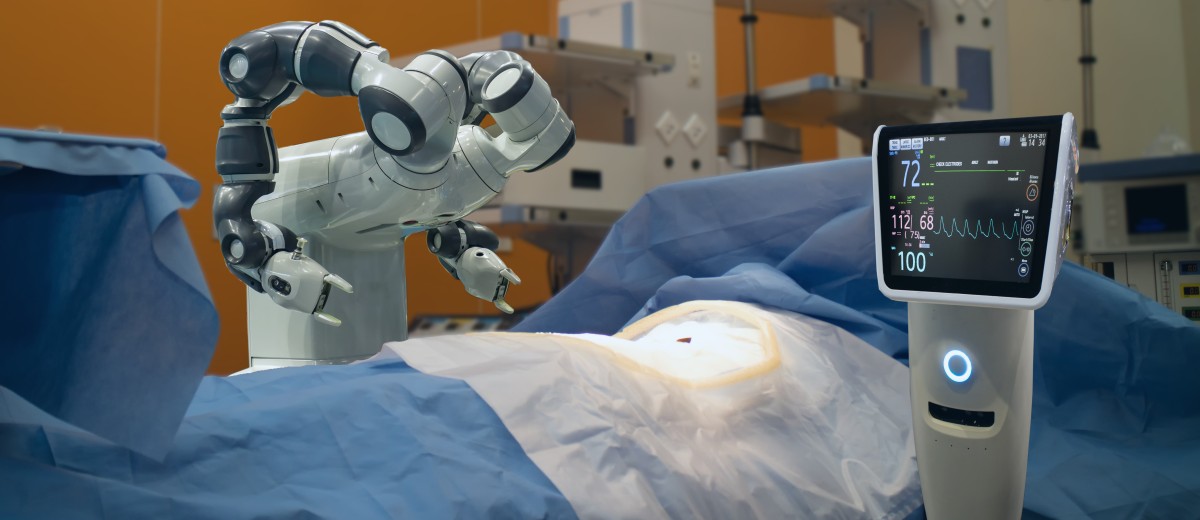
Robots are routinely used by surgeons to assist in surgery. But now a robot has for the first time completed an entire surgical procedure without the guidance of a human hand at any stage of the process.
Read More »Although mechanical systems with robotic arms and with specially designed instruments have been assisting patients in recent years, a doctor always has been in control—until now.
The use of a robot for an entire surgical procedure therefore opens up a whole new world in which even complex surgeries on humans will regularly be conducted by robots.
The result will be more consistent and more predictable outcomes for patients, the developers of the robot predict. It has the potential to provide safety, efficiency and consistency that is independent of a surgeon’s experience and skill, say the team of researchers from Johns Hopkins’ Whiting School of Engineering who designed the robot, known as the Smart Tissue Autonomous Robot, or STAR.
Can use used anywhere
The breakthrough surgery even opens up the possibility that robots can be used to conduct surgical procedures anywhere, even in remote parts of the world, where skilled surgeons are unavailable. Another suggested use is on the battlefield, where trauma surgery can be performed on soldiers who are wounded.
In addition, such robotic systems also will be important to assist in keyhole surgeries, which has many benefits, such as the reduction of pain and a lower risk of infection compared with standard surgery, says Axel Krieger, an assistant professor of mechanical engineering at Johns Hopkins’ Whiting School of Engineering who helped to create the robot. Patients will be able to return home more quickly, freeing up hospital space.
Joined two ends of intestine
The surgery conducted by the robot was a laparoscopy, which is a procedure in which a fiber-optic instrument is inserted through the abdominal wall to view the organs in the abdomen or to permit a surgical procedure. In this case the robot connected the two ends of an intestine.The procedure—called intestinal anastomosis— is intense and complex, requiring a high degree of precision and motion that is repetitive. It also comes with limits on vision.
Such surgeries also involve control strategies that are highly adaptable and often take place in deformable and unstructured environments, the developers explain.
Better than humans
The findings indicate that one of the most delicate and intricate surgical tasks can be automated, Krieger says. Not only did the robot perform the same procedure in four animals, but also produced results that were significantly better than humans conducting the same procedure, he adds.
Joining the two ends of an intestine can be said to be the most challenging task in gastrointestinal surgery. It requires a surgeon to stitch together the ends of the incision with consistency and high accuracy. Even the slightest misplacement of a stitch or a slight hand tremor can lead to a leak that can have complications for the patient that could be catastrophic.
Vision-guidance system
Krieger—working with a team at the Children’s National Hospital in Washington, D.C. and Professor Jin Kang, a Johns Hopkins professor of electrical and computer engineering—helped to create the robot, which is a vision-guided system designed specifically to stitch soft tissue.
The current version is an advanced model of a robot developed in 2016 that accurately repaired a pig’s intestines, but needed a large incision in order to gain access to the intestine. That machine also needed more guidance from humans.
The team fitted the STAR with new features that improved the surgical precision and enhanced the robot’s ability to work independently of human control. Also included are suturing tools that are specialized and newly developed imaging systems that provide more accurate representations of the area that is being operated on.
Able to adapt and plan
Surgery performed on soft tissue is particularly difficult for robots because it can be unpredictable, explains Krieger. It has to be able to adapt rapidly in order to handle obstacles that are unexpected. The robot used in this procedure has a new control system that is able to modify the surgical plan in real time in the same way that a human surgeon would.
The STAR robot is guided by an algorithm that is based on machine learning. It includes an advanced three-dimensional vision system that is essential in enabling surgical robots to be safer and smarter, says Kang.
The STAR is the first robotic system that is able to adapt, plan, and implement a surgical plan involving soft tissue with little human intervention, says Hamed Saeidi, a visiting research scientist of mechanical engineering at the Johns Hopkins’ Whiting School of Engineering.
The team from Johns Hopkins also included Justin D. Opfermann, Michael Kam, Shuwen Wei, and Simon Leonard. Michael H. Hsieh, director of Transitional Urology at Children’s National Hospital, also helped with the research.
The research article is published in Science Robotics.





